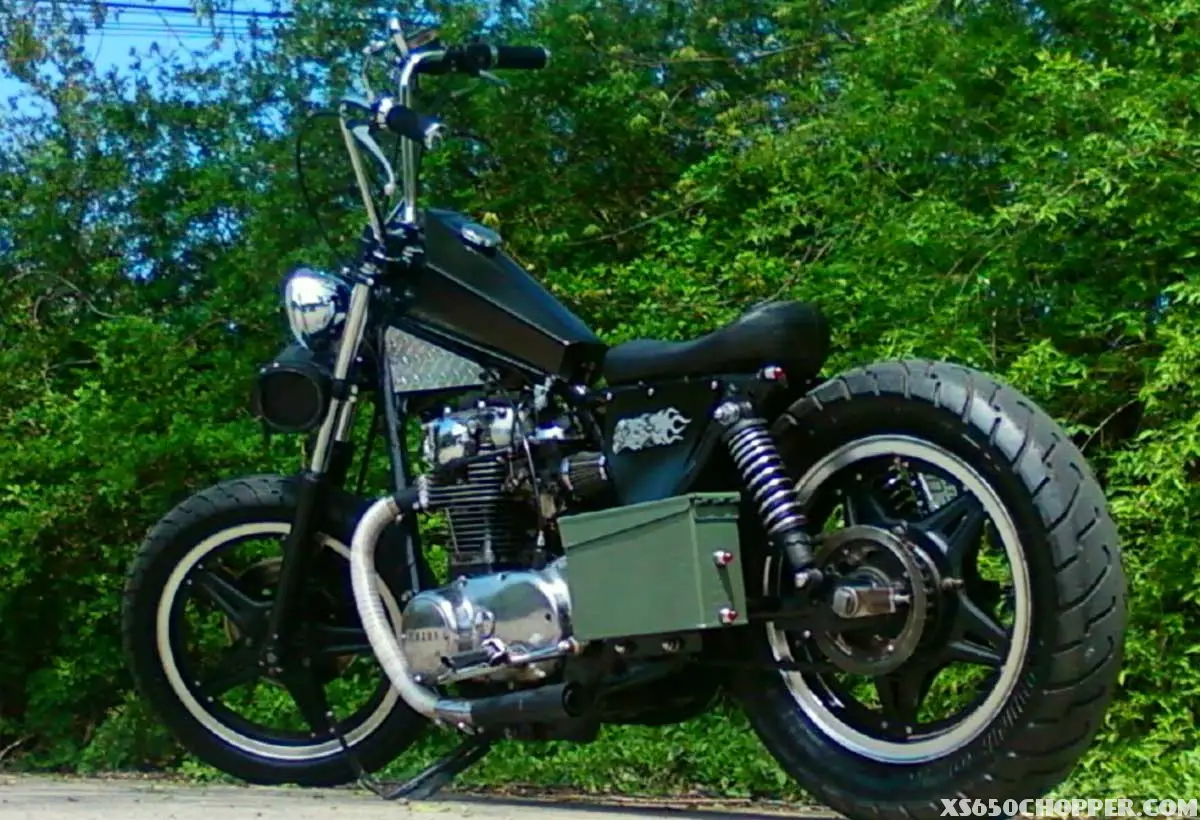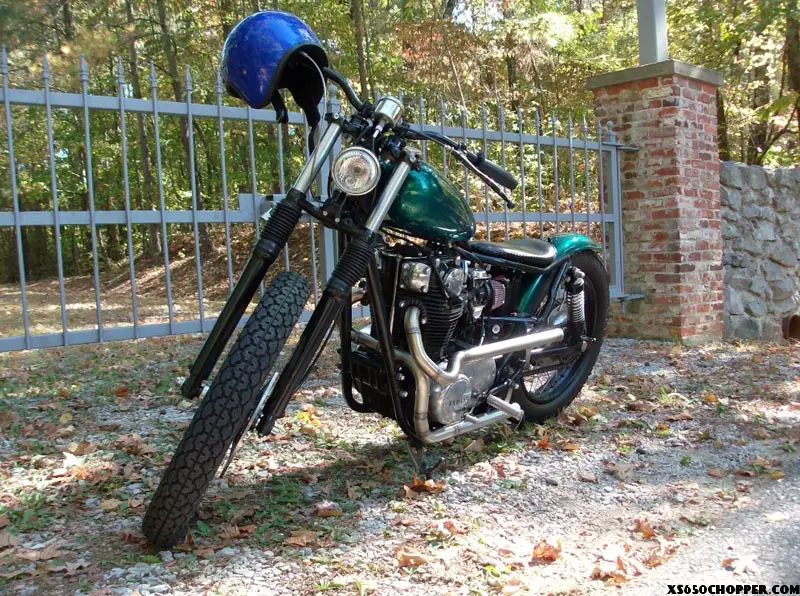This is not directly related to an XS650 chop, but I did this for my XS650 chop – which is in it’s very early stages (read: getting the damn thing running). I apologize for some of these pics. I was almost finished with this project before I started taking any pictures. I wish I had taken pics before I started. This speedometer is off an old Bridgestone motorcycle (not sure of the year or model). The odometer was barely legible as was the left side of the speedometer. Once I got it apart I found out it was just really dirty. This procedure will work for almost any mechanical speedometer. The newer speedometers are backlit through the gauge face and night time results will not turn out as well. This speedometer is backlit from around the gauge face.
Once you have the speedo out of it’s decorative cup/housing, lay it on the table face down. Using a small screwdriver, gently pry the lip of the trim ring up. Work your way around the gauge, careful not to pry too much or you could possibly tear the thin metal. When you get the lip pryed up all the way around – remove the trim ring, glass, and inner bezel (if applicable).



Once again, lay the speedo face down and remove the screws holding the inner mechanism to the housing. These screws should be on either side of the cable stud. Turn the speedo back over and lift the mechanism out of the housing.

Clamp the speedo mechanism in a vice, and using two small screw drivers, gently pry under opposite sides of the needle. This needle is metal. Other needles are plastic (read: more fragile) and have metal in the center. The needles are a press fit on a smooth shaft. The first time I removed this needle – it took a little bit of force. The second time – it slid off much easier.

This is how my speedometer looked – only much dirtier. One of the screws that holds the face plate had been missing for ??? and the plate had rattled around and enlarged the left screw hole big enough that I would have had to use a washer to hold it in place. We’ll get to the solution shortly.

This is what the mechanism looks like without the face. You’ll notice that the odometer is set to 000000. I reset it. I do not advise doing this. In my state, vehicles past a certain year are mileage exempt. Check your local laws before resetting your odometer.


I took the old face plate and scanned it on my computer. I used the highest resolution to get the best quality. Using a photo editing software – I cleaned up the image. At this point – you can do whatever your heart desires – different colors or fonts.
***Suggestion: Do not leave the holes white on the image – make them the same color as the rest of the gauge***

A buddy of mine suggested doing a turtle and rabbit like on a lawnmower. Of course you can clean it up and make it look original. It’s all up to you. I decided to go a little different route. I added some noise to make it a little grainy. I knew it would not turn out perfect and this would help mask that.
Now for the solution to the enlarged hole. I had a guy cut out a new faceplate on his waterjet. He didn’t get the middle hole for the needle or the rectangle hole for the odometer exactly in the correct spot so I had to enlarge them a little.

I printed out my new faceplate on some good photo paper. I cut it out, but left the 4 holes filled for the time being. I used 3M super 77 spray adhesive to attach the paper to the aluminum plate. I let it dry, face down, with some weight on it. Once completely dry (~15 min) I used a sharp razor knife and cut out the holes from the backside, using the aluminum plate as a guide. I had to touch up around the screw holes with a sharpie because the image didn’t match the plate exactly.

At this point, it’s basically reassembly. The needle was originally white, but I sprayed a few coats of orange on it. Once it was dry, I just positioned it as close to the first tick mark and pressed it on with my thumb. Here it is with the inner bezel on. Now is a good time to hook up the speedo cable, chuck the other end in a drill and make sure the needle will move and return to its original position ***drill has to be in reverse*** You may also use a 9V battery to power your gauge light to see if the results are satisfactory.

Clean the glass so it’s spotless, especially on the inside. You don’t want a finger print staring you in the face once you get this thing sealed back up. Set the trim ring face down. Insert glass (in the proper direction) and the inner bezel. Set the housing face down on top making sure the bezel is lined up properly. Use a soft faced mallet and fold the trim lip over in four corners (corners on a circle – right) to hold everything together temporarily. Make sure everything is lined up, then proceed in crimping the trim ring on. I used a make shift punch with a large face and no sharp edges. Work your way around the gauge and seal that sucker up.


Here it is – all reassembled. You may be able to see the specs of dirt that are stuck to the inside of the glass. I’ll use compressed air through one of the lighting holes in the back of the gauge to try to get that clean. I’ll probably use a small bead of silicone around the trim lip that was pryed up, just to help keep the elements out a little better.

And in its home in the headlight bucket.









